Greenhouses "house": features and benefits

A greenhouse in a garden or summer cottage can be different: arched (with an arch roof), multifaceted and spherical. However, the most popular among summer residents is the building in the form of a house. It stands out noticeably against the background of other analogs, differs in a number of advantages, although it also has disadvantages. Consider the features, dimensions of such structures and find out which greenhouse is better for a house.
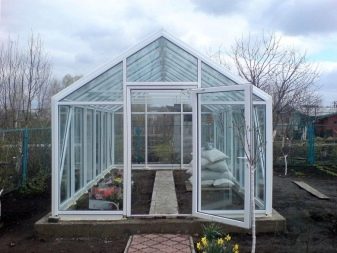

Peculiarities
A greenhouse house in the usual sense seems to be a structure in the form of a reduced copy of a house with a gable roof. Its characteristic features are initially rectangular walls of sufficient height so that the summer resident does not have to bend over when entering and working. With the advent of new technologies, an outwardly simple design can be special, with additional functionality.
The roof of such greenhouses can consist of one or several parts. Sometimes their number reaches 12 pieces. Doors are an obligatory attribute of such structures. The greenhouses themselves have an increased planting area. Due to their height, they have a larger internal volume.
A mandatory element of creation is a frame, without it it is impossible to build any structure.
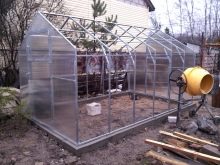
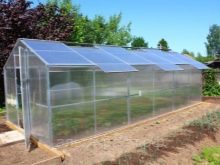

Inside, you can plant climbing plants (for example, beans, cucumbers). In this case, the structure will not be overloaded, there will be an area for plants in it. A place for greenhouses is chosen illuminated, not covered with tree branches. Despite the fact that the structure is of a closed type, it cannot be installed near the carriageway, even if this corner of the site is free.
They try to choose a place for greenhouses higher. This is due to the fact that water can stand in the lowlands after rain, and this is unacceptable. The choice of material for the greenhouse should be thorough, otherwise you can question the creation of a favorable temperature regime inside the building. The material of the frame is also important, the choice of which is directly related to the durability of the greenhouse.

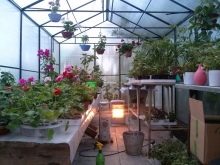
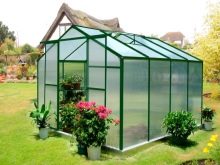
Compared with analogues of other forms, such structures are able to withstand the weight load on the roof. For example, some types of material used will not break under the influence of a blizzard and heavy snowfall. Unlike arched structures, their snow will not linger on the roof. Therefore, the load on the frame will not increase. This will extend the life of the house-shaped greenhouses.
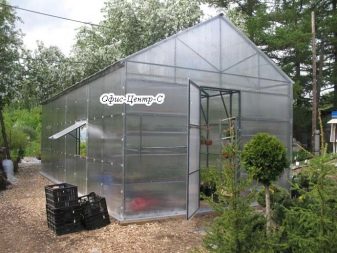
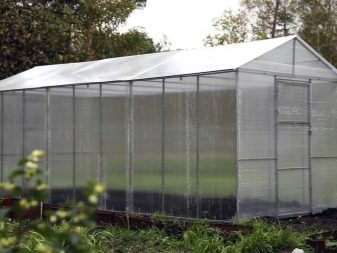
Advantages and disadvantages
House-shaped greenhouses have many advantages:
- They are closed-type buildings that protect seedlings, flowers and fruits from frost, wind, rain and hail.
- They allow you to harvest earlier than usual. You will be able to treat yourself to high quality handmade products.
- Such buildings are permeated with sunlight. Plants in them will be strong, protected from harmful insects, rodents and poultry.
- On the market, such structures are presented in a wide range. You can choose the option that is most convenient for you, taking into account personal preferences and available budget.
- The functionality of greenhouse buildings with a house is different. You can choose an option, for example, with an opening top. It can be a model with sliding elements, the number of which you can vary as you wish.
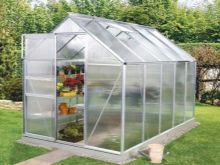

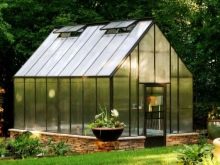
- Such structures look attractive. They are not bulky and do not contradict the concept of landscape design.
- These buildings are made from different raw materials.Depending on it, the monumentality of the greenhouse can be different.
- Most of the models are characterized by excellent ventilation of structures. Hot air accumulating under the ceiling comes out through open doors, vents and open places of shifted slopes.
- Depending on the model, the greenhouse can be equipped with a thermal drive and automatic irrigation. This will significantly increase the possibilities of obtaining a rich harvest.
- Often, such houses are made independently from scrap materials.
- Unnecessary building materials are used, left over after the construction of a house or summer cottage.
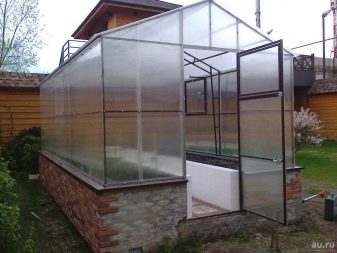
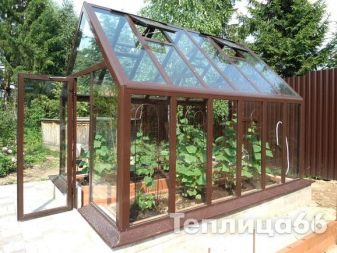
Several disadvantages of such structures should be noted:
- Building a greenhouse in the shape of a house is somewhat more complicated than creating analogs. This will take more material and time. The foundation will need to be poured.
- The assembly of such a structure requires a particularly careful approach. If assembled incorrectly, it will affect the appearance and functionality.
- Straight-walled models cost a house more expensive than options for other forms. If you are planning to purchase a large size model, the cost can be high.
- Not every coating used has sufficient capacity. Some of the materials used are capable of creating condensation from the inside when exposed to sunlight.
- Not every type of raw material is designed for significant mechanical stress. Low-cost coverage is spoiled by severe blows. Therefore, the greenhouse has to be dismantled.
- It is not always possible in small areas to locate a greenhouse with a length from west to east in order to protect against sharp and gusty winds from the north.
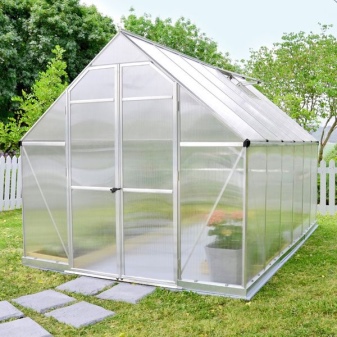

Materials (edit)
Any greenhouse with a house consists of two main components: a frame and a sheathing material. For the frame of such buildings, metal, wood or plastic are used.
- Metal. Metal greenhouses are popular with summer residents due to their special strength and reliability. At the same time, the weight of the structures is often low. However, such structures cannot be called durable: the metal is susceptible to corrosion.
- Array. An alternative to a metal frame is wood. Such a system is environmentally friendly and thorough. However, during operation, the tree will have to be protected from rotting by treatment with various preparations. Otherwise, the life of the greenhouse may be shortened.

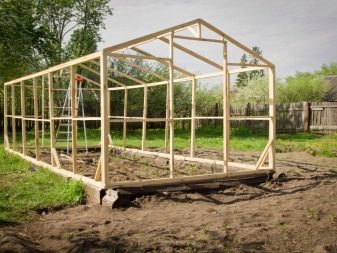
- Plastic. Plastic as a frame material cannot be called a worthy alternative to metal and solid wood. Its only advantage is its lightness and ease of assembly. However, the process of operating such a structure will not be long. Plastic is not designed for weight loads (for example, it can break from extreme cold and heavy snowfall).
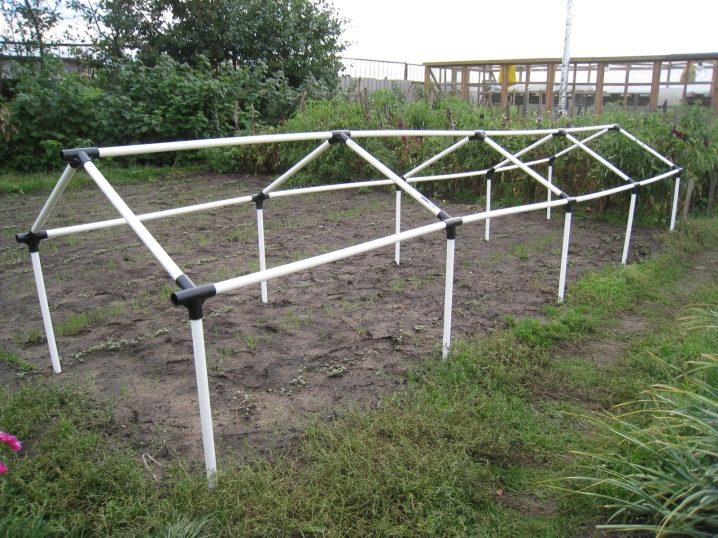
Polyethylene, glass and polycarbonate are used as materials for covering greenhouses in the form of a house.
- Film. The film is a budget option, with the help of which the greenhouse is "glazed". It scatters light, so it will be light in the structure. At the same time, it has more disadvantages: when heated under the sun, its quality characteristics deteriorate. The worse its quality is initially, the more often it will have to be changed.
- Glass. Glazing is considered a traditional greenhouse cover. Glass is able to maintain a favorable microclimate inside the greenhouse. It perfectly transmits the sun's rays, reduces the level of heat losses. At the same time, the construction of a greenhouse with such material will cost more than other analogues. The weight of the building will be greater, the fragility of the glass will force you to be especially careful.
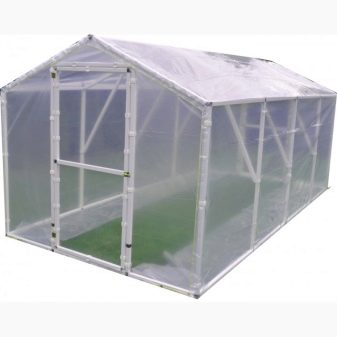
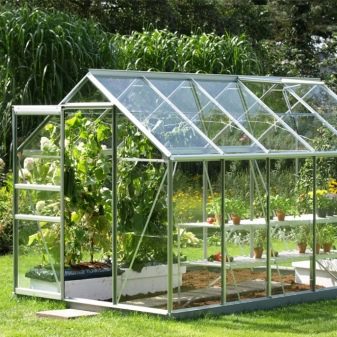
- Polycarbonate. This material is gaining popularity among summer residents. With its help, you can build a building quickly. The sheets are distinguished by good light-penetrating ability and inexpensive price. Construction will not be expensive; due to the light weight, the greenhouse will not put pressure on the foundation. This is a modern type of material that surpasses glass by more than 100 times in strength.
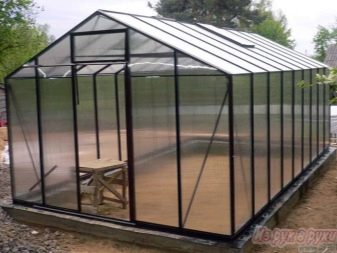
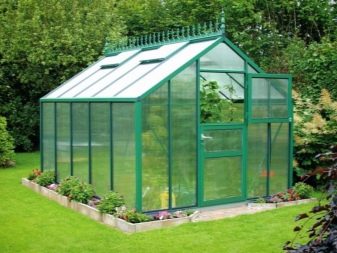
Dimensions (edit)
The parameters of the greenhouse depend on their own preferences, available space for it and financial capabilities. The average standard dimensions of a gable greenhouse are 2.5 - 3.5 m in width, 5 to 7 m in length and 2.5 m in height in the ridge. Some varieties are more compact (1.5x3.5 m), and their height sometimes does not exceed 1.5 m. Such structures cannot be called comfortable and sufficient to stand there in full growth.
Other buildings are elongated (1.5 x 5, 2.6 x 6 m) or volumetric (4 x 12.6 m). The optimal distance between the greenhouse posts should be at least 1 m. The ridge supports are usually located at a distance of 2.5 m.
The dimensions of the roof slope should not be less than 0.8 m. The door parameters are 184x86 cm.
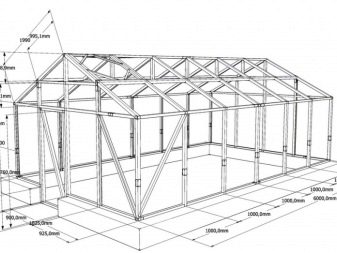
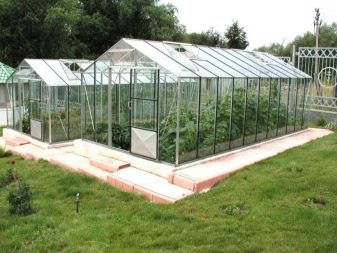
Which is better?
Having decided to build a greenhouse as a house, users think about which one to give preference to, so that the structure will serve as long as possible.
There are basic selection criteria.
- First, decide on the material of the frame. Choose between metal and wood. Remember that the tree will periodically have to be covered with a composition from decay and insects.
- When choosing a coating, you should take a closer look at polycarbonate. It is highly appreciated by professional craftsmen, which is a good indicator.
- Choose the reinforced version (with the reinforcement of the facades and arcs). It will not be damaged in case of bad weather. Pay attention to the presence of vents.
- Glass is problematic in construction and will create a significant weight load on the frame. However, as a coating material, it is a good solution.
- Choose an option in which you can build an automatic irrigation system and a thermal drive. The polyethylene variety cannot be heated.
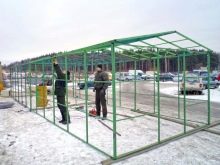
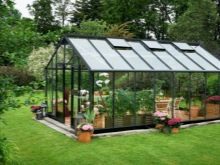
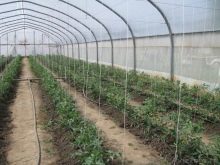
What should you pay attention to?
Having decided on the choice of materials, pay attention to several nuances. This will allow you to make the right choice.
- Size matters. Insufficient height design is devoid of air. It is difficult to care for tall plants and stand up in it.
- The entrance door must be large enough for the user. In order for water and snow to drain from the slope, its angle of inclination must be at least 30 degrees. The shape of the stingray is especially important.
- It is better to erect a building in the form of a house with a removable roof. This is thought out even at the design stage of the greenhouse. The sliding roof will allow you to ventilate it at any time convenient for you.
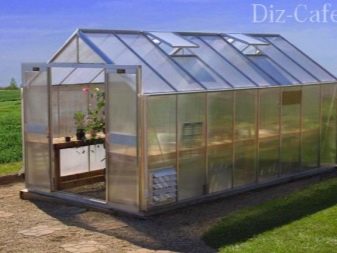
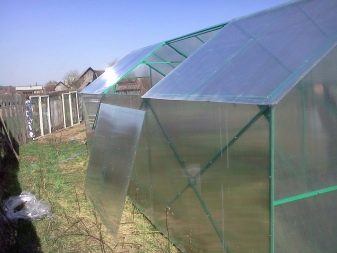
Manufacturers
The market of domestic producers offers a lot of options for beautiful and high-quality greenhouses with a house. Among the assortment of Russian companies, there are options worthy of a purchase. For example, "Will. Delta" in the form of a house made of galvanized pipes with 2 doors and 2 vents. This design has a removable roof.
You can take a closer look at the option "Success lodge" the same company. The frame is based on galvanized steel. The covering is cellular polycarbonate. It is characterized by flexibility, fire resistance, strength. This greenhouse is easy to transport to the desired location on the site, and its assembly will not take more than a few hours.
Adopt one nuance: arched greenhouses, called "Tsar's House" and others of the same name are not house-shaped greenhouses. Don't be guided by the name. Of course, the arch models are more illuminated by the roof.
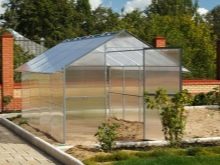
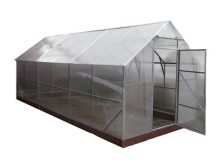
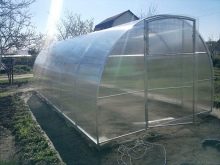
However, it is the roof that determines the name of the model. It can be gable or broken, with slopes of different or equal height, solid or consisting of separate sections. However, it can never be spherical and teardrop-shaped. The classification quite clearly distributes the models into different categories.
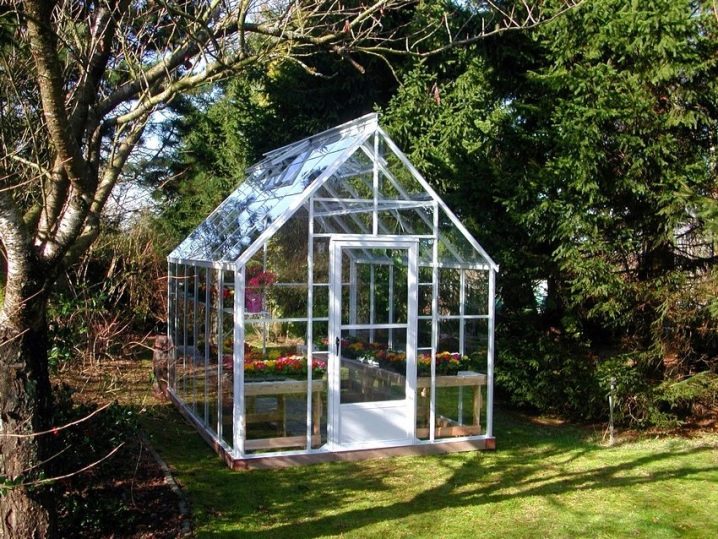
For information on how to install a greenhouse "house", see the next video.





























































The comment was sent successfully.